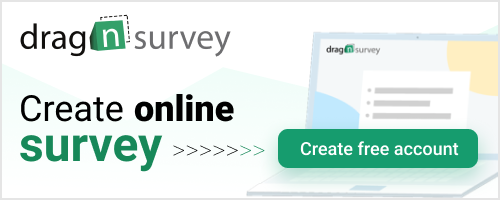Customer satisfaction has become more than ever a priority for the commercial development of all businesses. The power of word-of-mouth and the multitude of channels through which it can be expressed, is pushing companies to rethink their entire relationship with consumers. With this in mind, companies have understood that it was important to measure customer satisfaction in order to adapt to the expectations of their customers and not suffer the effects of negative reviews. However, many of them do not know the measurement tools and Key Performance Indicators (KPIs) that could help them effectively. Here are the main elements to take into account.
>> Visit Drag’n Survey to create an online survey, click here

CSAT: Customer Satisfaction Score
The Customer Satisfaction Score allows you to measure customer satisfaction in a simple way through a single question: “Are you satisfied with our service/product/after-sales support, etc.?” The choice of response is generally limited to four possibilities:
- Very satisfied
- Quite satisfied
- Not very satisfied
- Not at all satisfied
The CSAT rate is then measured based on the number of responses equal to “very” or “quite” satisfied.
NPS: Net Promoter Score
In terms of quality management, this indicator is one of the most important. In a “customer-centric” approach, where consumer satisfaction is at the heart of the company’s concerns, the Net Promoter Score allows you to measure an essential point: a buyer’s propensity to recommend a product or service to their circle. A satisfied customer would recommend a company to 3 people in their circle. On the contrary, a dissatisfied consumer would let 10 people around him know. It is therefore essential to take this KPI into account in order to implement corrective actions and adapt its services to the expectations of its buyers.
Measuring NPS
Consumers are invited to express their willingness to recommend a company on a scale of 0 to 10. People giving a score of 9 or 10 demonstrate a strong consumer engagement and can be considered brand promoters. On the contrary, those who have given a score between 0 and 6 could harm its reputation. To obtain the NPS rate, the percentage of ambassadors must be calculated and subtracted from that of detractors.
The CES: Customer Effort Score
This indicator (Customer Effort Score) corresponds to the effort made by the consumer to contact the company. It does not stop at the purchasing experience alone but also includes the ease of access to the company’s call center, the ability to obtain a refund or resolve a problem, etc.
This score is becoming increasingly important, particularly in e-commerce and for supporting multi-channel marketing strategies. Indeed, these require even more agility to best meet the expectations of buyers.

Repurchase Rate
This KPI is significant for customer satisfaction. Obtained immediately, it allows you to survey the customer about their intention to renew a contract or make a purchase with a company. This allows measuring customer loyalty.
To obtain the repurchase rate, the ideal is to offer a survey to evaluate customer satisfaction, directly after their purchase. This indicator is also an excellent way to motivate teams. Indeed, it makes the customer experience tangible and concretely measures the results of a strategy.
Waiting Time: A Very Important Indicator
Despite the abundance of new KPIs, the waiting time to access the company’s call center remains central. Indeed, it is estimated that the majority of calls made are due to a problem. To have a waiting time considered good, 80% of calls must be handled in less than 1 minute and 30 seconds.
More about surveys:
Transitioning to a Typeform Competitor, click here
Premier Software for Online Quiz Creation, click here
Exploring Alternative Solutions to Google Forms, click here
Considering Different Options to Replace Jotform, click here
Embracing Competing Platforms to SurveyMonkey, click here
The 10 Most Effective Online Survey Tools Available, click here
Key Techniques in Conducting Qualtitative Research, click here
Secrets to Developing an Effective Satisfaction Survey, click here
A Beginner’s Guide to Conducting Quantitative Research, click here
The Use of Likert Scales for Measuring Attitudes in Surveys, click here
7 Quick and Engaging Online Survey Templates for Students, click here
The Dos and Don’ts of Open-Ended Questions in Online Survey Design, click here
Distinguishing between Qualitative and Quantitative Research Approaches, click here
Read the article:
French – Les 5 principaux indicateurs de la satisfaction client, click here
Portuguese – os 5 principais indicadores de satisfação do cliente, click here
German – Die 5 wichtigsten Indikatoren für die Kundenzufriedenheit, click here
